
|
![]()
Greatest Films of the 1960s
1960 | 1961 | 1962 | 1963 | 1964 | 1965 | 1966 | 1967 | 1968 | 1969
Title Screen Film Genre(s), Title, Year, (Country), Length, Director, Description 



Billy Budd (1962, UK), 125 minutes, D: Peter Ustinov
Based upon Herman Melville's short 1924 novel, a compelling adventure drama and war film. In 1797, Britain and France were warring nations in the Napoleonic Wars. Innocent, honest, good-natured and naive British merchant seaman Billy Budd (Terence Stamp) was impressed to serve on the HMS Avenger, and soon became very popular and charismatic among the crew. The Royal Navy's ship was captained by Edwin Fairfax Vere (Peter Ustinov), assisted by the cruel and sadistic Master of Arms John Claggart (Robert Ryan). During an incident on board the ship, Budd aided a sick crewman named Enoch Jenkins (Ronald Lewis), who ultimately fell to his death after being ordered by Claggart to report to his post. During an inquiry into the death, held in the Captain's cabin, Claggart - who had developed a vengeful hatred for Budd, perjured himself when he falsely accused Budd of conspiring and organizing a mutiny. When Budd attempted to defend himself, he stammered (under the pressure) and struck out at Claggart - and killed him with one blow (witnessed by the captain). Budd faced a court-martial hearing, presided over by three judges: 2nd Lieutenant Julian Radcliffe (John Neville), Gunnery Officer Steven Wyatt (David McCallum), and 1st Lieutenant Philip Seymour (Paul Rogers). The judges fully supported Budd during deliberations - they believed that Claggart had falsely accused Budd of mutiny, and they thought that Claggart's death was merely an accident. Although the three wished to exonerate Budd, Captain Vere (who wasn't eligible to be one of the judges) then convincingly intervened, and argued that the law explicitly stated that an impressed crew member had to face the death penalty if he struck (and killed) an officer - there couldn't be any exceptions. Budd was convicted, and as he was hanged from the yardarm, Budd heroically cried out: "God bless Captain Vere," causing the guilt-ridden Captain to abdicate and lose command of his ship. The crew was on the verge of mutiny - at the same time that a French vessel attacked the HMS Avenger and set it on fire, and Captain Vere was crushed and killed by falling rigging.

Cape Fear (1962), 105 minutes, D: J. Lee Thompson


Days of Wine and Roses (1962), 117 minutes, D: Blake Edwards




Dr. No (1962, UK), 110 minutes, D: Terence Young



Gypsy (1962), 143 minutes, D: Mervyn LeRoy
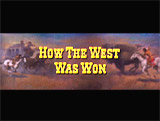

How the West Was Won (1962), 165 minutes, D: John Ford, Henry Hathaway, George Marshall



La Jetée (1962, Fr.) (aka The Jetty, or The Pier), 28 minutes, D: Chris Marker
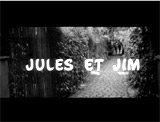


Jules et Jim (1962, Fr.) (aka Jules and Jim), 104 minutes, D: Francois Truffaut
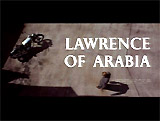



Lawrence of Arabia (1962, UK), 220 minutes, D: David Lean
One of the greatest epic films of all time, and a Best Picture winner, with rich cinematography of the immense desert. Lawrence of Arabia was one of the earliest films to showcase the enormity and stark beauty of the Saharan desert. Its magnificent Super Panavision 70 mm scope and poetic desert imagery were captured within a spectacular story of a larger-than-life, idealistic adventurer. A sweeping, breath-taking, cinematic biographical epic that follows the true-life exploits of a famed British officer, T. E. Lawrence (Peter O'Toole in his first major film), and his transformation from an enigmatic eccentric to a hero in WWI Arabia. Assigned there, he courageously unites the warring Arab fractions into a guerrilla front to battle the Turks, Germany's allies. Included the great scenes of Omar Sharif's riding out of a shimmering desert mirage, the jump-cut from a lit match to a brilliant desert sunrise, and the assault on Akaba.



Lolita (1962, UK), 152 minutes, D: Stanley Kubrick
Director Stanley Kubrick's sixth film - a brilliant, sly adaptation of Vladimir Nabokov's celebrated yet controversially-infamous and banned 1955 novel about a middle-aged man's unusual, doomed sexual passion/obsession for a precocious, seductive "nymphet" girl. Academic professor Humbert Humbert (James Mason) lusted after under-age fourteen year-old Dolores "Lolita" Haze (Sue Lyon), daughter of frumpy Charlotte (Shelley Winters), although the film began with the conclusion - the aftermath of an orgy and Humbert's murderous confrontation with rival pedophile Clare Quilty (Peter Sellers).


The Loneliness of the Long Distance Runner (1962, UK), 104 minutes, D: Tony Richardson

Long Day's Journey Into Night (1962), 134-174 minutes, D: Sidney Lumet
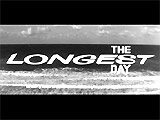

The Longest Day (1962), 180 minutes, D: Andrew Marton, Ken Annakin, Bernhard Wicki
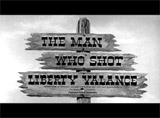

The Man Who Shot Liberty Valance (1962), 118 minutes, D: John Ford
Another B/W Ford film about the passing of the Old West, one of the master's last westerns. In 1910, respected but timid Senator Ransom Stoddard (James Stewart) from the East journeys westward by train with his wife Hallie (Miles) and returns to the city of Shinbone to attend the funeral of his old friend Tom Doniphon (John Wayne). Told in flashback to a local newspaper editor, he remembers his life and career in the wild town and why he was reputedly known as "The Man Who Shot Liberty Valance." As an eastern law school graduate, he set up a law practice and had to contend with outlaw Liberty Valance (Lee Marvin). Idealistic Ransom (called "Pilgrim") is contrasted to the rugged cowboy frontiersman Doniphon, and accorded fame and credit for taming the West and civilizing the town, but it was Doniphon who killed tyrannical outlaw Liberty Valance.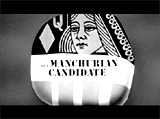


The Manchurian Candidate (1962), 126 minutes, D: John Frankenheimer
Based on Richard Condon's novel, and adapted by George Axelrod. A complex, realistic depiction of brainwashing in a frightening, satirical psychological thriller. An American platoon fighting in the Korean War is captured and brainwashed by Communist North Koreans in Manchuria. Upon their return to the US, one of the veterans Major Bennett Marco (Frank Sinatra) is haunted by recurring nightmares about their frightening incarceration. He slowly realizes that fellow hero and Congressional Medal of Honor winner Sgt. Raymond Shaw (Laurence Harvey), controlled and manipulated by his spy-agent "Queen of Diamonds" ambitious mother (Angela Lansbury) (the wife of right-wing, McCarthyite demagogue Senator John Iselin (James Gregory)), is behind the sinister plot to assassinate political enemies. The mind-controlled operative Shaw murders his own wife Jocie (Leslie Parrish) and his father-in-law, liberal Senator Thomas Jordon (John McGiver). In the tense climax, Marco uncovers the programmed killer's fiendish plans to assassinate the presidential nominee.

The Miracle Worker (1962), 107 minutes, D: Arthur Penn

Mondo Cane (1962, It.) (aka A Dog's Life), 105 minutes, Paolo Cavara, Gualtiero Jacopetti, Franco E. Prosperi
This popular Italian-made globe-trotting, amateurish "shockumentary" was luridly advertised as a travelogue of "truth stranger than fiction" - with xenophobic glimpses of dark-skinned, bare 'savages' engaged in grotesque and bizarre religious rituals, tribal ceremonies, animal cruelty, and lurid scenes of human perversity! The film was castigated as pornographic, trashy and vulgar, although by today's standards would be considered very tame. Often faked, reconstructed or manipulated footage (with misleading narration) included the beheading of a horde of bulls and the mass head-bashing of some pigs in New Guinea, force-feeding of native girls to make them more marriageable and fertile contrasted with weight-loss techniques, Singapore's "House of Death", self-flagellation, hula dancing in Hawaii, the eating of dog in Thailand contrasted with a wealthy pet cemetery in the US, pig-suckling, and environmental catastrophe - the effects of radiation and atomic testing on a small island. The film inspired a series of sequel "Mondo" films (or "shockumentaries") and dozens of imitators - it was the progenitor of "snuff" films, execution videos, hard-core pornography, and even reality TV.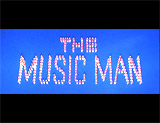

The Music Man (1962), 151 minutes, D: Morton Da Costa

Sundays and Cybele (1962, Fr./Austria) (aka Les Dimanches de Ville d'Avray), 110 minutes, D: Serge Bourguignon 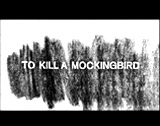

To Kill a Mockingbird (1962), 131 minutes, D: Robert Mulligan
A poignant adaptation of Harper Lee's best-selling novel by screenwriter Horton Foote, set in small-town 1930s Alabama. Narrated by the adult voice of Kim Stanley as a coming-of-age, autobiographical story, whose innocence about racial bigotry and intolerance was changed forever. The film compellingly wove together the children's nightmares, personified by the mute, mentally-retarded Boo Radley (Robert Duvall in his screen debut) with the prejudiced hatred of the bigoted townspeople. In this inspiring courtroom drama, always rated as one of the finest, Scout Finch (Mary Badham) living in Maycomb, Alabama flashbacked as an adult to her 1930s youth, where her family included her widowed, lawyering father Atticus Finch (Gregory Peck), and her brother Jem (Phillip Alford). Neighboring them was a mysterious recluse that they named Boo Radley (Robert Duvall). The Lincolnesque, compassionate attorney Atticus took the impossible, and unpopular task of defending black man Tom Robinson (Brock Peters) on false charges of beating and raping a white-trash woman, Mayella Ewell (Collin Wilcox). During the trial, Mayella claimed that Tom had helped her with chores, then attacked her in the house. Her racist, poor, alcoholic, redneck father Robert E. Lee "Bob" Ewell (James Anderson) claimed he saw the attack. Tom testified that Mayella often asked him over, and due to her perceived loneliness and that he felt sorry for her, he often assisted her. On this occasion, she grabbed and kissed him, sexually attracted to him. During the trial, Atticus argued persuasively that left-handed, angered Bob struck Mayella, causing facial injuries on one side of her face. One-handed and right-handed Tom couldn't have caused the bruises. The all-white jury convicted Tom, and shortly after when he tried to escape, he was shot and killed by a deputy. Ewell remained angered with Atticus, spit in his face, and then attacked Jem and Scout as they walked home one night from a school event. Boo came out of nowhere, and stuck a knife in Ewell's belly, and saved them. The Sheriff Heck Tate (Frank Overton) decided to hush the murder and claim that Ewell fell on his own knife, thereby saving Boo (from being killed like a mockingbird).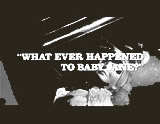




What Ever Happened to Baby Jane? (1962), 132 minutes, D: Robert Aldrich
A great psychological thriller, black comedy, and over-the-top camp classic is this great trashy melodrama - with the bizarre (and sole) pairing of two legendary -- and rival -- screen legends in a gothic, macabre, Grand Guignol horror film. The screenplay, by Lukas Heller, was based on Henry Farrell's novel Baby Jane (who also authored the novel Hush... Hush, Sweet Charlotte). A grotesque Baby Jane Hudson (Bette Davis at 54 years of age), a former vaudeville child star, and paralyzed invalid sister Blanche (Joan Crawford) from a mysterious, career-ending car accident (for which Jane was blamed but never charged), also a former movie star, live together in a gloomy, crumbling mansion in Los Angeles. Pasty white-faced Jane, whose career faded long ago, is now a deranged alcoholic, and vengefully bitter and jealous toward her wheelchair-bound sister secluded in an upstairs bedroom. Enmity worsens when a local TV network airs a marathon tribute to Blanche Hudson movies, and Jane learns that Blanche is planning to sell the mansion and put her in a sanitarium. There are many stunning scenes and excessive performances, particularly Jane's relentless tormenting of Blanche by serving an ex-pet and roasted rat for "din-din," Jane garishly dressed up as a little girl as she is being coached by impoverished pianist and musical director Edwin Flagg (Victor Buono in his film debut) for an improbable comeback as she croaks, "I've Written a Letter to Daddy." And the concluding beach scene finale, when a past secret is revealed to Jane and she replies, "You mean, all this time we could've been friends?" The film's ending echoes the beginning when Jane purchases two strawberry ice cream cones and then insanely spins, pirouettes and dances, drawing a curious circle of people around her to fulfill her craving desires.